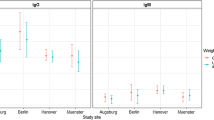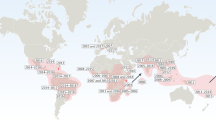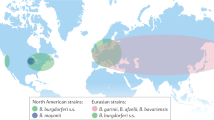Abstract
Lyme disease (borreliosis) incidence continues to increase despite a growing knowledge of primary and secondary prevention strategies. Primary prevention aims to reduce the risk of tick exposure and thereby decrease the incidence of new Lyme disease cases. Secondary prevention targets the development of disease or reduces disease severity among people who have been bitten by infected ticks. Numerous prevention strategies are available, and although they vary in cost, acceptability and effectiveness, uptake has been universally poor. Research in areas where Lyme disease is endemic has demonstrated that despite adequate knowledge about its symptoms and transmission, many people do not perform behaviors to reduce their risk of infection. New prevention strategies should aim to increase people's confidence in their ability to carry out preventive behaviors, raise awareness of desirable outcomes, and aid in the realization that the necessary skills and resources are available for preventive measures to be taken. In this article we evaluate the prevention and treatment strategies for Lyme disease, and discuss how these strategies can be implemented effectively. As many patients with Lyme disease develop arthritis and are referred to rheumatologists it is important that these health-care providers can educate patients about disease-prevention strategies.
Key Points
-
Lyme disease is preventable, but its incidence continues to rise
-
Primary prevention strategies, from vector elimination to human vaccination, have intrinsic obstacles to implementation; none has been sustained successfully in communities at risk
-
Despite adequate knowledge about the symptoms and transmission of Lyme disease, many people who live in endemic areas do not practice any behaviors to prevent the disease
-
Prevention strategies should aim to increase people's confidence in their ability to perform preventive behaviors and to raise awareness that desirable outcomes are attainable
This is a preview of subscription content, access via your institution
Access options
Subscribe to this journal
Receive 12 print issues and online access
$209.00 per year
only $17.42 per issue
Buy this article
- Purchase on Springer Link
- Instant access to full article PDF
Prices may be subject to local taxes which are calculated during checkout

Similar content being viewed by others
References
Stanek G and Strie F (2003) Lyme borreliosis. Lancet 362: 1639–1647
Centers for Disease Control and Prevention (2004) Lyme disease—United States, 2001–2002. MMWR 53: 365–369
Centers for Disease Control and Prevention (2005) Summary of notifiable diseases—United States, 2003. MMWR 52: 1–8
Hsia E et al. (2002) Cost-effectiveness analysis of the Lyme disease vaccine. Arthritis Rheum 46: 1651–1660
Burgdorfer W (1989) Vector/host relationships of the Lyme disease spirochetes, Borrelia burgdorferi. Rheum Dis Clin North Am 15: 775–787
Poland G (2001) Prevention of Lyme disease: a review of the evidence. Mayo Clinic Proc 76: 713–724
Denis DT et al. (1998) Reported distribution of Ixodes scapularis and Ixodes pacificus (Acari: Ixodidae) in the United States. J Med Entomol 35: 629–638
Burgdorfer W et al. (1988) Development of Borrelia burgdorferi in Ixodid tick vectors. Ann NY Acad Sci 539: 172–179
Hu L and Klempner M (2001) Chapter 10: update on the prevention, diagnosis, and treatment of Lyme disease. Adv Intern Med 46: 247–275
Smith R et al. (2002) Clinical characteristics and treatment outcome of early Lyme disease in patients with microbiologically confirmed erythema migrans. Ann Intern Med 136: 421–428
Nadelman R et al. (1996) The clinical spectrum of early Lyme borreliosis in patients with culture-confirmed erythema migrans. Am J Med 100: 502–508
Steere AC et al. (1980) Antibiotic therapy in Lyme disease. Ann Intern Med 93: 1–8
Wormer G et al. (2003) Duration of antibiotic therapy for early Lyme disease. Ann Intern Med 138: 697–704
Nadelman RB et al. (2001) Prophylaxis with single-dose doxycycline for the prevention of Lyme disease after an Ixodes scapularis tick bite. N Engl J Med 345: 79–84
Steere AC et al. (1987) The clinical evolution of Lyme arthritis. Ann Intern Med 107: 725–731
Logigian EL and Steere AC (1992) Clinical and electrophysiologic findings in chronic neuropathy of Lyme disease. Neurology 42: 303–311
Logigian EL et al. (1990) Chronic neurologic manifestations of Lyme disease. N Engl J Med 323: 1438–1444
Dinerman H and Steele AC (1992) Lyme disease associated with fibromyalgia. Ann Intern Med 117: 281–285
Szer IS et al. (1991) The long-term course of Lyme arthritis in children. N Engl J Med 325: 159–163
Steere AC et al. (1990) Association of chronic Lyme arthritis with HLA-DR4 and HLA-DR2 alleles. N Engl J Med 323: 219–223
Hsu VM et al. (1993) 'Chronic Lyme disease' as the incorrect diagnosis in patients with fibromyalgia. Arthritis Rheum 36: 1493–1500
Davidson WR et al. (1994) Influence of annual and biennial prescribed burning during March on the abundance of Amblyomma americanum (Acari: Ixodidae) in central Georgia. J Med Entomol 32: 72–81
Wilson ML et al. (1984) Effect of deer reduction on abundance of the deer tick (Ixodes dammini) Yale J Biol Med 57: 697–705
Piesman J (2006) Strategies for reducing the risk of Lyme borreliosis in North America. Int J Med Microbiol 40 (Suppl): 17–22
Hayes E and Piesman J (2003) How can we prevent Lyme disease? N Engl J Med 348: 2424–2430
Allan SA and Patrican LA (1995) Reduction of immature Ixodes scapularis (Acari: Ixodidae) in woodlots by application of desiccant and insecticidal soap formulations. J Med Entomol 32: 16–20
Schulze TL et al. (1992) Effectiveness of an aerial application of carbaryl in controlling Ixodes dammini (Acari: Ixodidae) adults in a high-use recreational area in New Jersey. J Med Entomol 29: 544–547
Sigal L (2002) Vaccination for Lyme disease: cost-effectiveness versus cost and value. Arthritis Rheum 46: 1439–1442
FDA Consumer Magazine (online May–June 2002) Manufacturer discontinues only Lyme disease vaccine [http://www.fda.gov/fdac/departs/2002/302_upd.html] (accessed 30 October 2006)
Abbott A (2006) Uphill struggle. Nature 439: 524–525
Centers for Disease Control and Prevention (1999) Recommendations for the use of Lyme disease vaccine: recommendations of the Advisory Committee on Immunization Practices (ACIP) MMWR 48 (RR-7): 1–17
Shadick N et al. (1991) The cost-effectivemess of vaccination against Lyme disease. Arch Intern Med 161: 554–561
Daltroy LH et al. (2006) A controlled trial of a novel primary prevention program for Lyme disease and other tick-borne illnesses. Health Educ Behav, in press
Couch P and Johnson CE (1992) Prevention of Lyme disease. Am J Hosp Pharm 49: 1164–1173
American Academy of Pediatrics Committee on Infectious Diseases (2000) Prevention of Lyme disease. Pediatrics 105: 142–147
Piesman J and Dolan MC (2002) Protection against Lyme disease spirochete transmission provided by prompt removal of nymphal Ixodes scapularis (Acari: Ixodeae). J Med Entomol 39: 509–512
Burgdorfer W et al. (1989) Pathophysiology of the Lyme disease spirochete, Borrelia burgdorferi in Ixodid ticks. Rev Infect Dis 6 (Suppl): S1442–S1450
Anderson JF (1991) Epizootiology of Lyme borreliosis. Scand J Infect Dis 77 (Suppl): 23–34
Shadick NA et al. (1997) Determinants of tick avoidance behaviors in an endemic area for Lyme disease. Am J Prev Med 13: 265–270
Members of the RB Brigham Multipurpose Arthritis Center (2000) A randomized controlled trial of a primary prevention program for Lyme disease and other tick-borne illnesses [abstract 397]. Arthritis Rheum 43: 9S
Clark NM and Becker MH (1998) Theoretical models and strategies for improving adherence and disease management. In The Handbook of Health Behavior Change, 5–32 (Eds Shumaker SA et al.) New York: Springer Publishing Company
Janz N et al. (2002) The health belief model. In Health Behavior and Health Education: Theory, Research, and Practice, edn 3, 45–66 (Eds Glanz K et al.) San Francisco: Jossey-Bass
White MI (2003) Toward an evidence-informed, theory-driven model for continuing medical education [unpublished doctoral thesis]. University of British Columbia
Hochbaum GM (1958) Public participation in medical screening programs: a sociopsychological study. In PHS publication no. 572 Washington DC: US Government Printing Office
Acknowledgements
The paper was supported in part by grants from the NIH and the Arthritis Foundation.
Author information
Authors and Affiliations
Corresponding author
Ethics declarations
Competing interests
The authors declare no competing financial interests.
Rights and permissions
About this article
Cite this article
Corapi, K., White, M., Phillips, C. et al. Strategies for primary and secondary prevention of Lyme disease. Nat Rev Rheumatol 3, 20–25 (2007). https://doi.org/10.1038/ncprheum0374
Received:
Accepted:
Issue Date:
DOI: https://doi.org/10.1038/ncprheum0374
This article is cited by
-
Describing the experience of livestock producers from Ohio, USA with ticks and associated diseases
One Health Outlook (2023)
-
Who is afraid of ticks and tick-borne diseases? Results from a cross-sectional survey in Scandinavia
BMC Public Health (2019)
-
Prevention of tick bites: an evaluation of a smartphone app
BMC Infectious Diseases (2017)
-
Comparing the effect of a leaflet and a movie in preventing tick bites and Lyme disease in The Netherlands
BMC Public Health (2016)
-
Epidemiological situation of Lyme borreliosis in Germany: Surveillance data from six Eastern German States, 2002 to 2006
Parasitology Research (2008)



